|
Notes: Speke station was situated on the Garston and Warrington railway of the St Helens Canal & Railway Company (SHC&RC). The line opened in two stages from Runcorn Gap (Widnes) to Garston on 1 July 1852 and from Runcorn Gap to Warrington on 1 February 1853. Speke station was first shown in the timetable in September 1852. It was located half a mile north of its village namesake on the eastern side of Woodend Avenue which passed over the line on a bridge, the line being in a cutting at that point.
On 1 May 1854 the SHC&RC made an end-on connection with the Warrington & Stockport Railway (W&S) at Warrington Arpley. This created a through route between Garston and the Manchester area.
In the mid 1850s Speke was served by trains between St Helens and Garston Dock, and between Warrington and Garston Dock.
 |
The dominant railway company in the area was the London & North Western Railway (LNWR) who owned the strategically important 1830 Liverpool & Manchester line and a main route to London. The LNWR (and the earlier companies from which it was formed) had enjoyed good relations with the St Helens company from the opening of the latter company’s first line in February 1833, and a great deal of traffic passed between the two systems. However the SHC&RC had always had ambitions to extend its system into Liverpool, which unsettled the LNWR as they would not welcome a rival route between Liverpool and Manchester.
In the second half of the 1850s rival railway companies in the form of the Great Northern Railway (GNR) and the Manchester, Sheffield & Lincolnshire Railway (MS&LR) - who wanted access to Liverpool - saw an opportunity in the lines of the W&S and the SHC&RC. In February 1858 the GNR began to run a service between Garston Dock and London Kings Cross, but it is unlikely that it would have called at Speke. This caused friction with the LNWR and also the promotion of two new lines. The first, promoted by the GNR & MS&LR, was for a line from Garston Dock to Liverpool Brunswick. The second, promoted by the LNWR, was a line from a junction with the Garston and Warrington route ½-mile west of Speke station (Speke Junction) to a junction with the Liverpool and Manchester line at Edge Hill, Liverpool. Both lines effectively created the through route to Liverpool that the SHC&RC had always wanted. To build the latter route the LNWR re-engaged with the SHC&RC and it was the first line to receive approval on 21 July 1859. The GNR & MS&LR took longer to get their approval as the Garston & Liverpool Railway (G&LR) which was authorised on 17 May 1861.
These developments would have a big impact on Speke station. On 1 July 1860 the LNWR took out a lease on the Garston and Warrington line and began to operate the trains along the route. The running powers for both the GNR and MS&LR that had been negotiated with the St Helens company were left in place as part of the parliamentary approval for the lease arrangement. The reason why the LNWR wanted control of the line was because it intended to create a shorter route to London via a bridge over the River Mersey at Runcorn Gap: it needed the section of Garston and Warrington line between Speke Junction and Ditton to form part of the route. Authorisation for the line over the river was obtained in 1861, and work began in 1863. On 15 February 1864 the line from Speke Junction to Edge Hill opened. From this date the LNWR trains that served Halewood Road station ran to and from Liverpool Lime Street. On 1 September 1864 the LNWR absorbed the SHC&RC.
The G&LR line between Garston Dock and Liverpool Brunswick opened on 1 May 1864 allowing GNR and MS&LR trains to run through to Liverpool. On 5 July 1865 the two companies formed a joint undertaking, the Cheshire Lines Committee (CLC), which was joined by a third partner - the Midland Railway - on 18 July 1866. The G&LR was absorbed into the CLC. The LNWR had been obstructive towards the GNR and MS&LR with regard to their services over the Garston and Warrington line. Because of this the CLC obtained an Act to build its own direct route between Liverpool and Manchester in the form of a line from a junction with the former G&LR near Garston (Cressington Junction) to meet the existing lines in Manchester at Throstle Nest Junction. The new line which had opened completely by 2 September 1873 was only ½ -mile to the north of Speke station at the north end of Woodend Avenue, and a station was opened there called Hunts Cross.
The LNWR line over the River Mersey opened on 1 April 1869. From this date the section of line on which Speke station was situated became part of the main line between Liverpool and London with direct links to Chester and North Wales. Services towards Warrington continued, but stopping trains running between Liverpool and Crewe and between Liverpool and Chester also served the station.
The route through Speke became extremely busy and from 13 July 1891 it was quadrupled. The station was rebuilt for the quadrupling. In its post-1891 form it had four platform faces, two of which were part of an island platform. The main entrance to the station was via a single-storey street-level building located on the north side of the line. From the entrance building a covered footbridge spanned the tracks. On the southern side of the line it connected to another building that was also at street level but on the south side of the line. It was a modest but neat affair, single-storey with a shallow hipped roof and a prominent central chimneystack.
The footbridge connected to all of the platforms which were provided with single-storey structures with hipped roofs, complementing the southern entrance building. Awnings were placed in front of the flanking platform buildings and surrounding the building on the island platform; these also had shallow hipped profiles and serrated valances. The northern platform served the up main line. The north face of the island platform was used by trains on the down fast line and the southern face by up slow line trains. The southern platform was used by down slow line trains. It is likely that the slow line platforms were the busier with regard to stopping trains.
The December 1895 timetable showed Speke being served by 10 up and 9 down trains Monday-to Friday as shown in the table below. There was an extra up service on Saturdays and 3 trains each way on Sundays.
| Up Trains December 1895 |
Direction |
Down Trains December 1895 |
Direction |
| 6.50am |
Manchester London Road |
8.10am |
Liverpool Lime Street |
| 8.43am |
Warrington Arpley |
8.37am |
Liverpool Lime Street |
| 10.18am |
Manchester London Road |
09.00am |
Liverpool Lime Street |
| 1.55pm |
Warrington Bank Quay |
12.50pm |
Liverpool Lime Street |
| 3.05pm |
Manchester London Road |
2.33pm |
Liverpool Lime Street |
| 4.43pm |
Stockport |
4.00pm |
Liverpool Lime Street |
| 5.51pm |
Acton Bridge |
5.40pm |
Liverpool Lime Street |
| 6.28pm |
Manchester London Road |
7.30pm |
Liverpool Lime Street |
| 7.20pm |
Widnes |
8.30pm |
Liverpool Lime Street |
| 8.35pm |
Manchester London Road |
|
|
| 11.34pm (Saturdays Only) |
Widnes |
|
|
On 1 January 1923 Speke became part of the London Midland & Scottish Railway (LMS). Little development had taken place in its vicinity by 1930 and the station was fairly isolated. By 1930 Speke itself was served by buses and Hunts Cross station on the CLC was better placed to serve residential developments to the north. For that reason the LMS closed Speke on 22 September 1930. Its platform level buildings were demolished shortly afterwards. Ironically, within a decade a number of factories had been developed adjacent to the station site.
The platforms were extant in 1947 as was the north side entrance building. It is likely that the platforms would have been demolished by the end of the 1950s when works had begun on electrifying the line through Speke.
The 8D Association - Dedicated to promoting the history of South Lancashire and North Cheshire railways. Web Site
Route map by Alan Young.
Sources:
- The St Helens Railway, Its Rivals and Successors – J M Tolston – The Oakwood Press 1982.
- Bradshaw Timetable December 1895.
- Bradshaw Timetable July 1922.
To see the other stations on the Garston and Warrington railway click on the station name: Garston Dock, Garston Church Road, Halebank, Ditton, Ditton Mill, Widnes (1st), Widnes South, Cuerdley, Sankey Bridges,
Warrington Bank Quay Low Level and Warrington Arpley.
To see stations on the Warrington and Stockport railway click on the station name: Warrington Wilderspool, Latchford 1st, Latchford 2nd, Thelwall, Lymm, Heatley & Warburton, Dunham Massey & Broadheath.
|

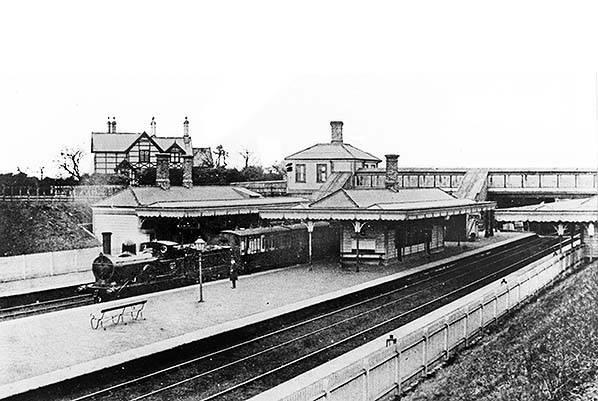

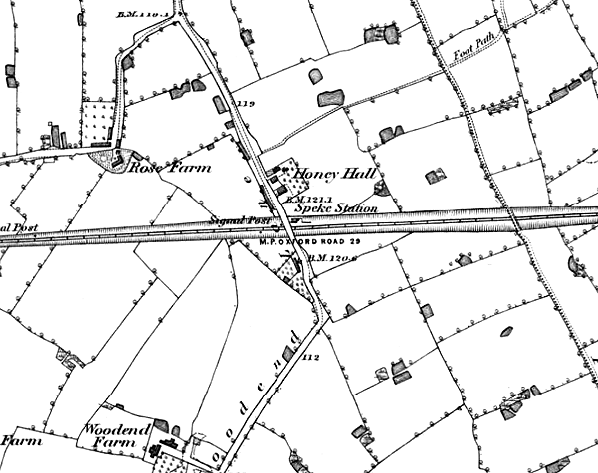
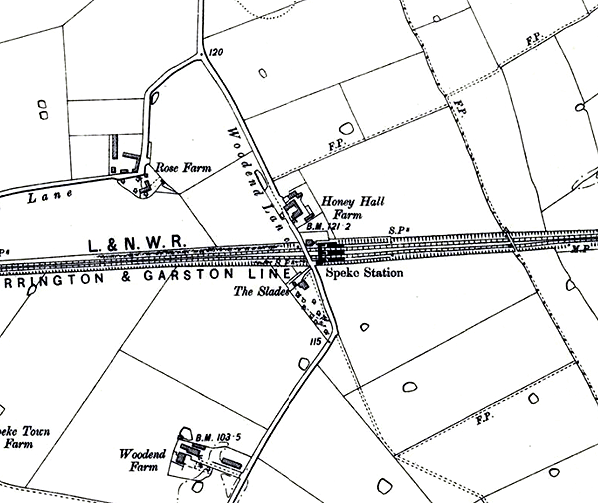



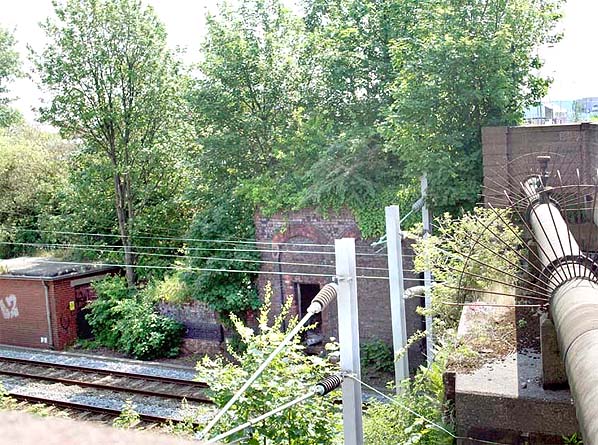
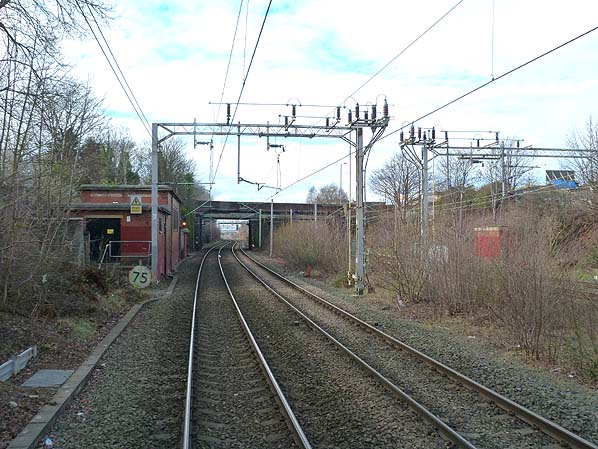
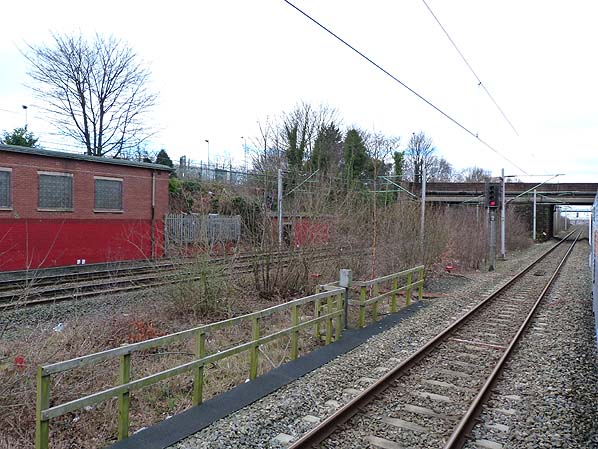
 Home Page
Home Page 


